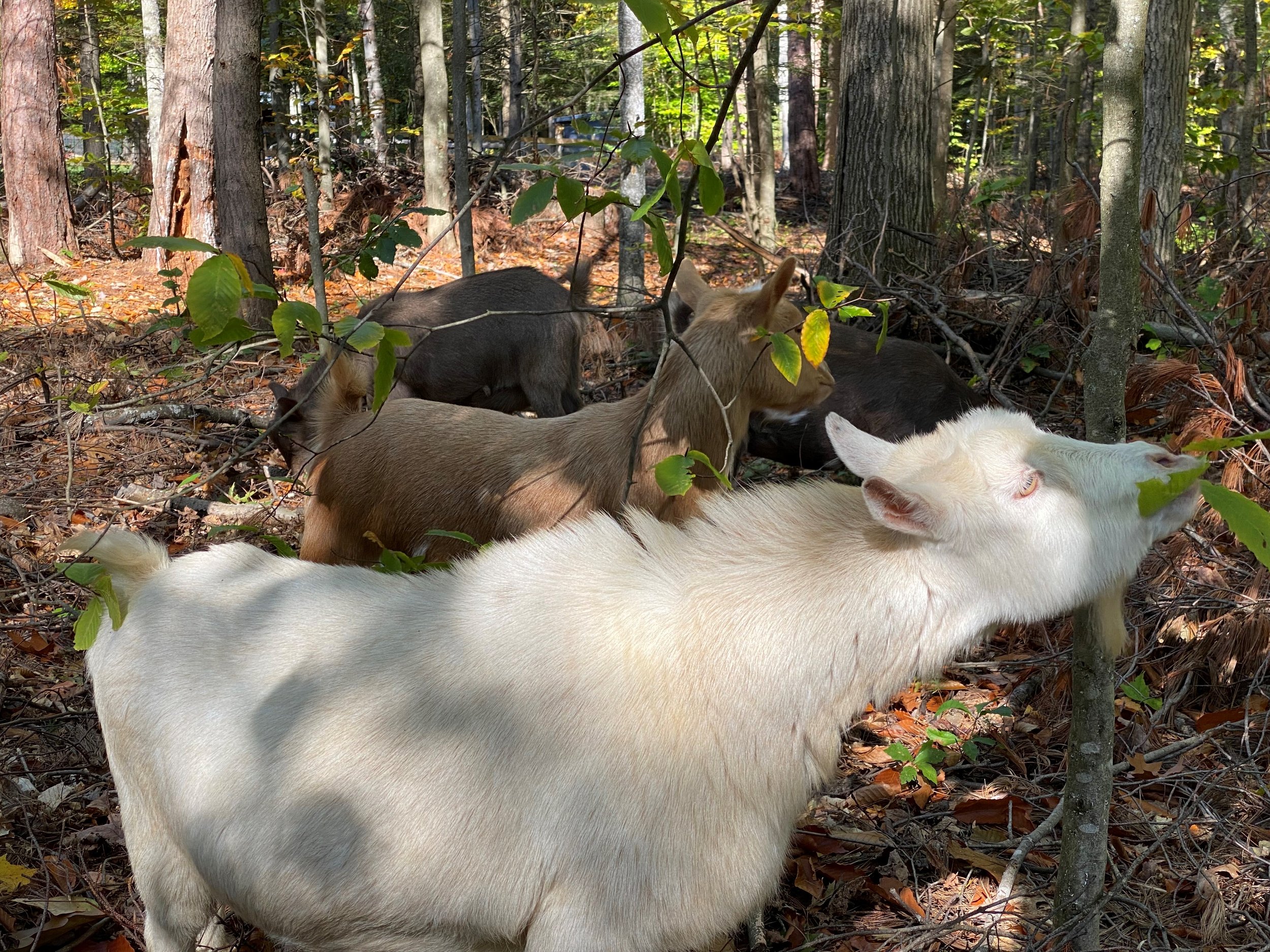Locally Sourced Wood Chips
One of the new things happening at the Intervale Conservation Nursery (ICN) is the introduction of ramial wood chips as part of our fertility system. Just as I was thinking that we should give this a try in some of our new planting beds, Ellie Mesler, who has a homestead in Milton, reached out to say that she had "twigs and branches left from tree removal on 3 acres of my land. The twigs and branches are a mix of beech, oak, maple and poplar and there is a separate section with all white and red pine twigs and branches."
Ellie had the trees removed as part of a project on her homestead to create a silvopasture for grazing a small goat herd that provides the milk for her hand-made goats milk soap. This was a great opportunity for ICN to have a long-term source of ramial wood for our field production system and to help out Ellie with her forest management project. The opportunity expanded when Ellie generously paid the cost for renting a chipper for a week and helped us with chipping between graveyard shifts as a hospital pharmacist and caring for her goats.
The role of ramial wood chips in our Nursery fertility system is to provide food for mycorrhizal and saprophytic fungi in the soil food web that will support the growth and health of the native trees we produce. Ramial wood is twig wood less than 7 centimeters (2.75 inches) in diameter and no more than 4" (10.16 centimeters) at the wide end of the branch. We're chipping mostly deciduous ramial wood because the lignans are more soluble for the growth of white rots that promote humic soil formation. The wood chips serve a double function of providing a light mulch to discourage weed seed germination while helping retain soil moisture.
This friendly article from MOFGA has more information on ramial wood chips in organic farming systems and includes a link to research on the subject.
Written by Lynda Prim, Intervale Conservation Nursery Manager


